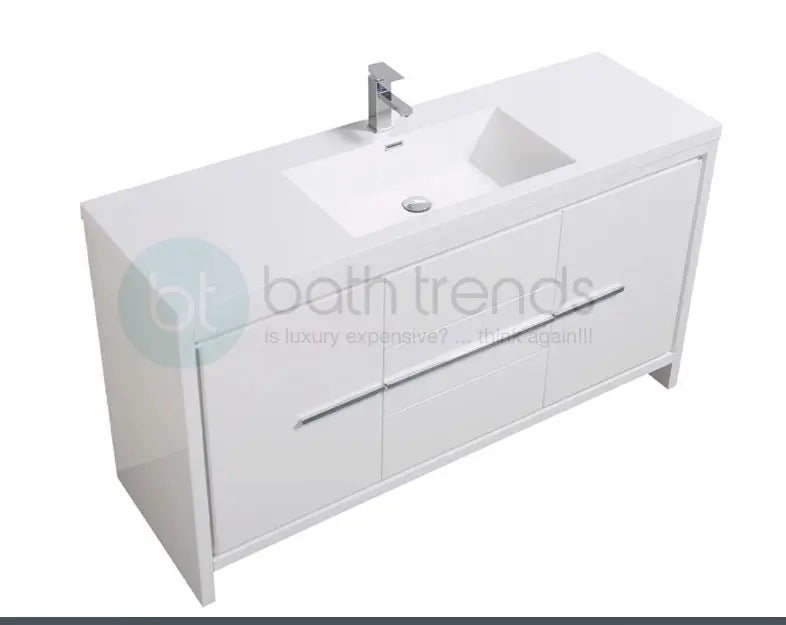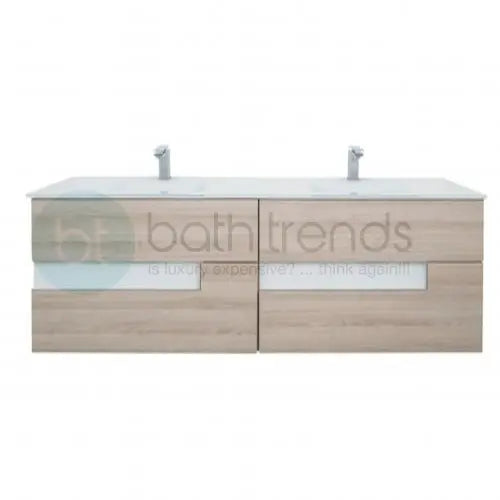
Are Bathroom Vanities Waterproof?
Water damage is a major annoyance for homeowners, and it can cost a lot of money to fix. Bathroom cabinetry is one of the most typical sites where water damage can occur. But what's the best technique to prevent water damage to cabinets? To know the answer, keep reading.
Are vanity units made of waterproof materials?
It usually depends on the vanity's construction. Most vanities, however, will not be entirely waterproof because they are composed of wood, wood composites, or stone, which all have some porosity. However, if the vanity is sealed, it can be waterproof.
What are the Benefits of Having a Waterproof Bathroom Vanity?
- Keeps your cosmetics safe:
Water flows downward due to gravitational attraction. So, water will flow through any gaps or spaces in the wall or cabinet, and it may find its way to your daily accessories if it is not water-resistant. When those items come into contact with water, they may become damaged, which may cause you injury later. Thus, having a water-resistant bathroom vanity will keep your accessories and cosmetics safe.
- Prevents mold and moisture:
If your bathroom floor is constantly moist, it may seep into the cabinet's walls and doors, causing dampness inside the structures. This harm is not visible to the naked eye.
Fungus and insects thrive in damp and moist environments, causing harm to your items and accessories. That is both unsanitary and dangerous. So, buying water-resistant bathroom vanity is your only alternative.
Besides, when you shower with hot water, it generates steam and increases the amount of water vapor in the air, which stays trapped in your bathroom for a long time. As a result, moisture management is disrupted, leading to mold growth. In both summer and winter, insulating your bathroom will maintain thermal equilibrium.
- Prevents corrosion and concrete cancer:
Water leaks rust your plumbing pipes and steel embedded in concrete, causing your building's foundation to weaken. You can avoid such situations by waterproofing the area surrounding the sink and plumbing pipes.
How can you keep your bathroom vanity from getting wet?
After a long shower or a thorough cleaning, the bathroom floor and vanity surroundings are still damp. After you've finished, make sure to dry the area completely.
- Ensure adequate airflow and ventilation:
Preventing damage to your bathroom vanity is cheaper than restoring it. So, you must ensure that your bathroom has appropriate airflow and ventilation. It will keep your bathroom dry and the wetness under control. You can also install an extractor exhaust fan in your bathroom.
- Keep the vanity doors open:
Keep the vanity doors open for a set period of time to let the air circulate inside. Airflow and sunlight will keep any damage and mold at bay. It will also prevent any damage to the plumbing pipes beneath your sink, such as cracking or waterlogging.
- Maintain a dry faucet area:
Always try to keep the faucet area dry. Also, keep an eye out for leaks in your sink, pipes, and vanity area. If necessary, make repairs.
Final Thoughts
Having a water-resistant bathroom vanity can save you hundreds of dollars in repair costs. Taking precautions to protect them can help limit the damage if the pipes or sink begin to leak.











